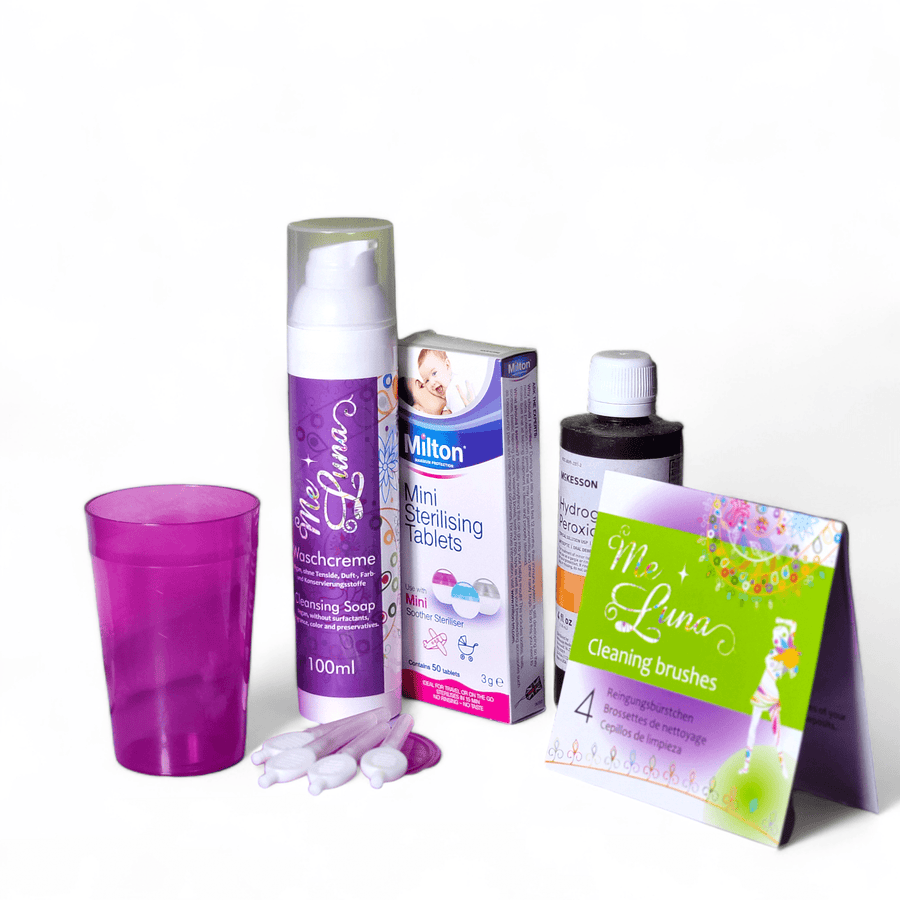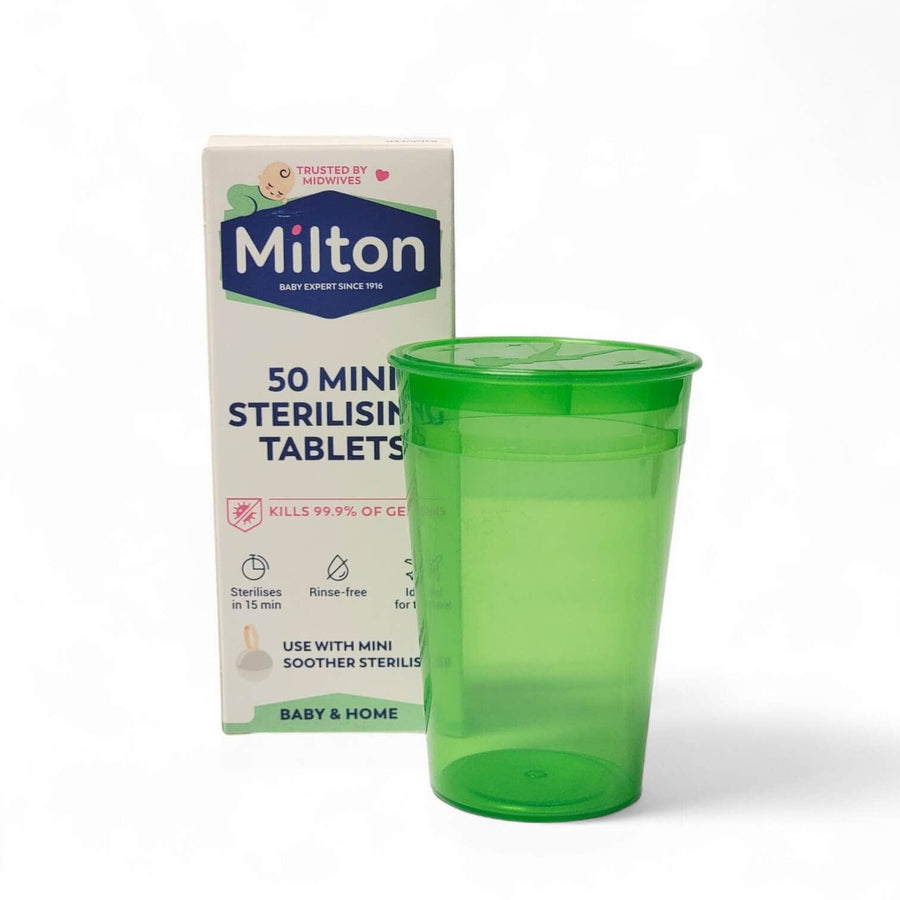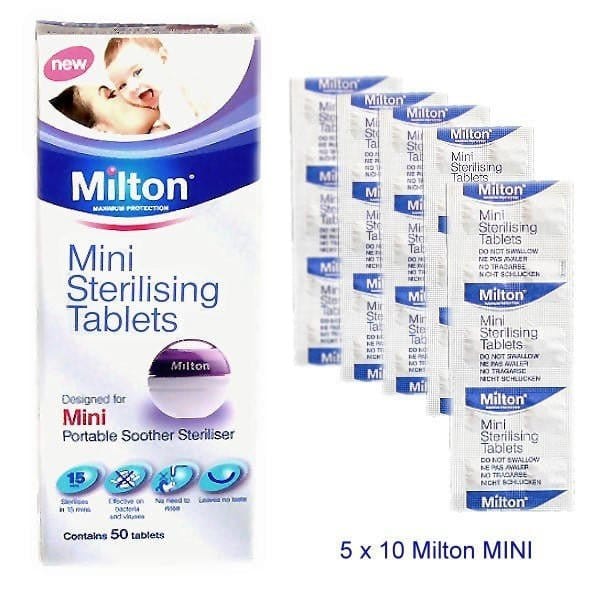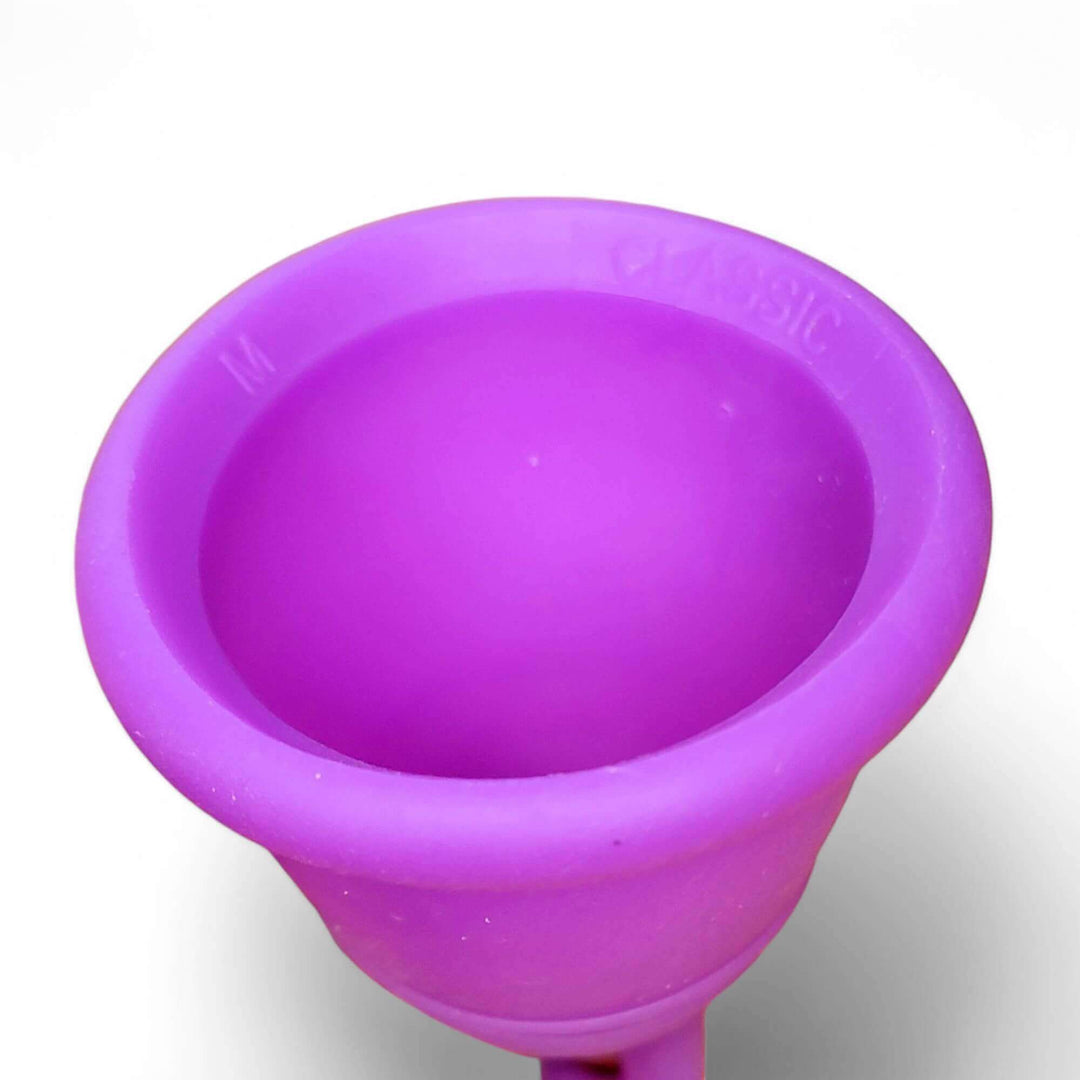How to Use a Menstrual Cup: The Complete Step-By-Step Guide
Thinking about trying a menstrual cup? You’re not alone. It might feel a little unfamiliar at first, but with the right info and a bit of practice, it can quickly become one of the easiest and most freeing parts of your period.
Step 1: Clean and Disinfect Before First Use
Starting with a clean cup is key to a safe and successful first cycle. Let’s make sure your cup is ready for use.
Before your first use, your cup must be both cleaned and disinfected. These are two different steps and both are essential.
Cleaning (always first)
-
Wash your hands with soap and water
-
Rinse the cup under clean water
-
Use a mild, unscented, oil-free soap
-
Rinse thoroughly to remove all soap residue
Disinfecting (after cleaning)
Disinfection eliminates bacteria and yeast. You can disinfect your cup using:
-
Boiling for 5 to 10 minutes, making sure the cup doesn’t touch the bottom of the pot
-
A microwave steam sterilizer that’s made for menstrual cups
-
Cold water disinfection using Milton cleaning tablets
Do not use bleach, rubbing alcohol, antibacterial soap, or scented or oil-based soaps. Vinegar is allowed in some situations but must be rinsed off thoroughly.
👉 Cleaning & Disinfection Guide
Step 2: Inserting the Cup
Inserting your cup is a skill that gets easier with a little practice. Find a comfortable routine that works for you.
-
Wash your hands
-
Choose a comfortable position such as squatting, sitting, or standing
-
Fold the cup using a technique like the punch-down or C-fold
-
Insert it at a slight angle toward your tailbone
-
Let the cup fully unfold and form a light seal
-
Adjust if needed by rotating or pressing gently on the base
MeLuna cups sit lower than tampons. If it feels uncomfortable, try repositioning or reinserting.
👉 How to Insert a Menstrual Cup
Step 3: Wearing Your Cup
It may take a cycle or two to get the hang of it. Be patient with yourself as you learn what works for your body.
Most people adjust to their cup within one to three cycles. During the learning phase, try using the cup at home and consider wearing a backup liner if that helps you feel more confident. If insertion feels tricky, try doing it in the shower or using a little clean water as a natural lubricant.
👉 Enjoying Your New Cup
👉 Tips for Beginners
Step 4: Removing the Cup
When it’s time to empty your cup, go slowly and relax. Removal gets easier with experience.
-
Wash your hands
-
Sit or squat to help your muscles relax
-
Use your pelvic muscles to push the cup downward
-
Pinch the base of the cup to release the seal
-
Gently wiggle the cup side to side while pulling it out
-
Empty the contents into the toilet or sink, clean, and reinsert or store
Never pull on the stem without first breaking the seal by pinching the base.
👉 How to Remove a Menstrual Cup
Step 5: Cleaning During Your Cycle
Keeping your cup clean between insertions helps maintain hygiene and extend the life of the cup.
Disinfection is not necessary between every use, but cleaning always is.
-
Rinse with cold water first to help prevent staining
-
Wash with warm water and a mild, unscented, oil-free soap
-
Rinse thoroughly to remove any soap residue
👉 Cleaning & Disinfection Tips
Step 6: Cleaning When Away from Home
Don’t worry if you’re not near a sink. You can still manage your cup safely and discreetly on the go.
If water isn’t available:
-
Wipe the cup with toilet paper or a soft tissue
-
Reinsert and clean properly as soon as possible
-
Some users carry a small water bottle or cup wipes
When storing the cup temporarily, use a breathable fabric cup pouch—not a waterproof or airtight container.
Step 7: Preventing and Fixing Odor
If your cup develops an odor, it’s often a sign that something in your care routine needs a small adjustment.
First, review your cleaning habits. Make sure you clean your cup thoroughly between uses and disinfect it at the end of each cycle. Also be sure your cup is completely dry before storing it in a breathable pouch.
Step 8: Menstrual Cups and TSS
Menstrual cups are a safe option when used properly. Hygiene is key to staying healthy and protected.
Toxic Shock Syndrome (TSS) is extremely rare with proper menstrual cup use. Be sure to:
-
Wash your hands before and after inserting or removing your cup
-
Clean your cup between uses
-
Disinfect your cup at the end of each cycle
-
Store your cup in a breathable pouch
Studies have shown that TPE, the material used by MeLuna, is less likely to harbor harmful bacteria than cups made from silicone.
🔗 Source
Step 9: FAQs and Myths
You’re not alone—most people have questions at first. Let’s clear up the most common ones.
-
You cannot lose the cup inside your body
-
The cup will not stretch out your vagina
-
The large majority of people can pee with the cup in place
- It's normal for TPE cups to turn oval. This does not cause leaks.
👉 FAQs
👉 Busting Menstrual Cup Myths
Final Thoughts
Using a menstrual cup is a learning process, but once you get the hang of it, it becomes a simple and empowering part of your period care routine. Clean and disinfect it properly, give yourself time to adjust, and always store it in a breathable fabric cup pouch between cycles. You've got this!





















Deja un comentario